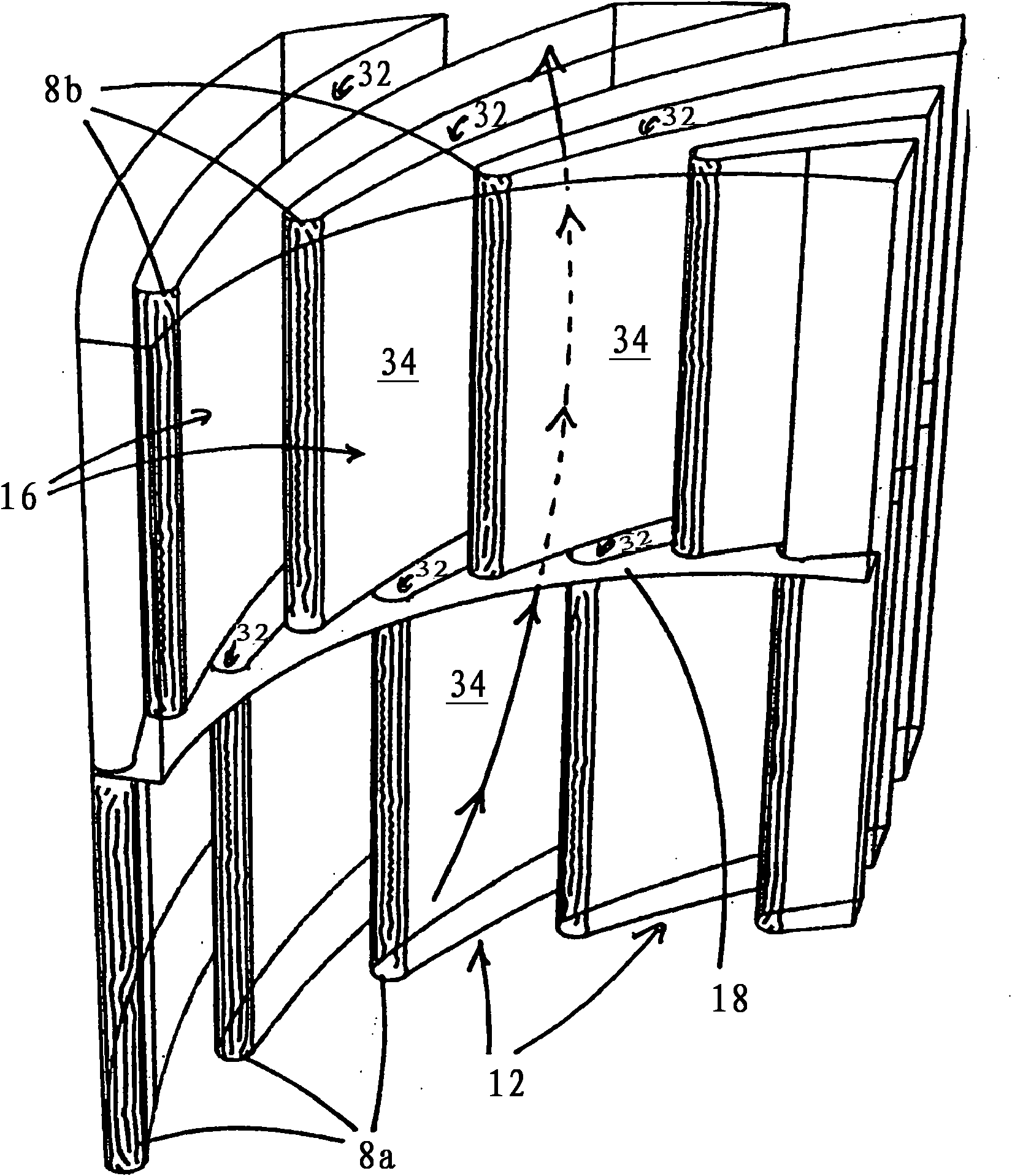Exhaust hood
A technology for exhaust hoods, air, applied in the field of exhaust hoods, which can solve the problems of odor burden and fire hazard, inaccessible fan impeller ventilation channels, unhygienic, etc.
- Summary
- Abstract
- Description
- Claims
- Application Information
AI Technical Summary
Problems solved by technology
Method used
Image
Examples
Embodiment Construction
[0027] figure 1A schematic cross-sectional view of the exhaust hood 2 is shown in , in which the first fan wheel 4 and the second fan wheel 6 can be seen. A plurality of guide vanes 8 are arranged around the fan wheels 4 , 6 on the outside. Room air is sucked and accelerated by the first fan wheel 4 through a suction opening 10 and is blown through openings 12 associated with the first fan wheel 4 into the ventilation channels laterally delimited by the guide vanes 8 . In the region of the guide vanes 8 , the room air blown into the ventilation channel (as indicated by the arrows) flows around the second fan wheel 6 .
[0028] Outside air is sucked in by the second fan wheel 6 through the air intake duct 12 and blown through openings 16 associated with the second fan wheel 6 (as also indicated by the arrows) into the ventilation duct laterally delimited by the guide vanes 8 in the way. Since the first fan wheel 4 is separated from the second fan wheel 6 by the partition 18 ...
PUM
 Login to View More
Login to View More Abstract
Description
Claims
Application Information
 Login to View More
Login to View More - R&D
- Intellectual Property
- Life Sciences
- Materials
- Tech Scout
- Unparalleled Data Quality
- Higher Quality Content
- 60% Fewer Hallucinations
Browse by: Latest US Patents, China's latest patents, Technical Efficacy Thesaurus, Application Domain, Technology Topic, Popular Technical Reports.
© 2025 PatSnap. All rights reserved.Legal|Privacy policy|Modern Slavery Act Transparency Statement|Sitemap|About US| Contact US: help@patsnap.com



